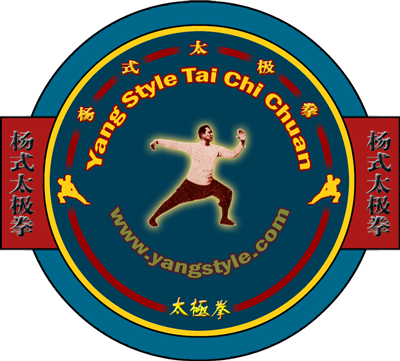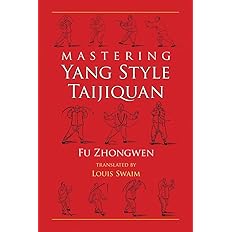

Tai Chi Chuan (Tai Chi) is celebrated for its numerous health benefits and has been a staple of Chinese wellness practices for centuries. Yang Style Tai Chi Chuan, developed by the Yang family in China over a century ago, is a profound embodiment of this tradition. This style consists of a series of movements, combining postures and transitions, meticulously designed to form the Hand and Weapons Forms of Yang Style Tai Chi Chuan.

Friday April 19th: Join us for a discussion on our NEW! "Virtual Discuss" platform, where we will plan our trip into Boston's Chinatown for World Tai Chi Day. Perhaps you would like to join us for the event and lunch in Chinatown?
The trip planning discussion via Zoom will take place on Friday, April 19th at 6:00 PM, EST.
Boston's World Tai Chi event day happens on Saturday April 29th at 10:00 AM, EST, right next to the iconic Chinatown gate.
Experience the grace and power of Tai Chi at Boston's World Tai Chi Day celebration with Grandmaster Bow Sim Mark (mother of Donnie Yen) and students, featuring demonstrations and insights into this ancient art.
Join Our Discussion
Tai Chi movements are not just physical exercises but also mental practices. Learning them one at a time allows practitioners to develop posture, alignment, strength, flexibility, and grace, culminating in a martial art form known for its precision and effectiveness. This flowing internal form of Chinese Kung Fu is accessible to individuals of all ages, promoting lifelong health and martial skills.
At the core of Yang Style Tai Chi Chuan is the principle of 'softness in strength,' focusing on the balance between yin and yang. This philosophy is mirrored in the movements, which are gentle yet powerful, demonstrating how relaxed power can overcome brute force.
Regular practice of Tai Chi Chuan offers extensive health benefits, including improved balance, enhanced flexibility, increased strength, and reduced stress levels. Its meditative movements also contribute to mental clarity and emotional stability.
Learning Yang Style Tai Chi Chuan involves not only mastering the physical movements but also understanding the philosophy and principles that underpin the art. It is a journey of continuous improvement and personal growth, suitable for all ages and fitness levels.

Unfold the Tai Chi experience with our in-person private lessons and online group discussions. Perfect for novices and seasoned practitioners, we offer the flexibility to learn privately or connect in community-focused sessions. Begin your journey to mastery and inner balance—whether in the comfort of your home or face-to-face with our expert guidance.
Start Your Journey NowDisclaimer: This website contains affiliate links, meaning we may earn a commission if you make a purchase through our links. This comes at no extra cost to you and helps support the content on this site. We are not responsible for third-party merchants' websites, content, information, advice, products, or services. Thank you for your support!

This is our Textbook here at YangStyle.com. Fu Zhongwen's classic guide offers the best documentation available of the Yang style of taijiquan. The superbly detailed form instructions and historic line art drawings are based on Fu’s many years as a disciple of Yang Chengfu, taijiquan’s legendary founder. Also included are concise descriptions of fixed-step, moving-step, and da lu push hands practices. Additional commentary by translator Louis Swaim provides key insight into the text’s philosophical language and imagery, further elucidating the art’s cultural and historical foundations.

Kidney Chi by Chi's Enterprise, encapsulated in a convenient 120-capsule count, is designed to offer targeted support for kidney, bladder, and the entire urinary tract, including the prostate. While these claims are not FDA evaluated, Kidney Chi aims to fortify these crucial systems in adults, maintaining overall health and wellness in these areas. Crafted with care by Chi's Enterprise, a trusted name in health supplements, this product represents a commitment to natural, focused support for urinary and prostate health. Ideal for those seeking to enhance the function of their kidney and related systems with a holistic approach.

Embrace the harmony of Tai Chi and holistic wellness with our diverse range of products. Whether you seek knowledge through our selection of insightful books and guides, the craftsmanship of our Tai Chi weapons, the comfort of our traditional uniforms and clothing, or the functionality of our unique accessories, every item invites you into the fold of mindfulness and health. Perfect for practitioners of all levels, our collection is crafted to elevate your experience of this ancient art. Discover your path to inner peace and physical poise today.
Tai Chi (Taijiquan) has a rich history that has evolved over centuries, leading to various branches and styles we see today. Here is a chronological overview of the major developments and branches of Tai Chi:
This timeline illustrates the evolution of Tai Chi from its origins in the Chen village to the diverse and widespread practice it has become today, encompassing a rich variety of styles and interpretations.
The history of Chen style Tai Chi, the oldest known form, is shrouded in legend and sparse historical documentation. However, here's what is commonly understood and accepted about its origins before it became officially recognized as Tai Chi (Taijiquan):
The transition from a family martial art to the recognized system of Tai Chi involved a combination of historical evolution, personal innovation, and the blending of various martial arts and philosophical concepts, which has led to the rich tradition of Tai Chi that we see today.
Chen Changxing (陈长兴), who lived during the late 18th and early 19th centuries (1771–1853), is a significant figure in the history of Chen style Tai Chi, as he is often credited with synthesizing earlier Chen family martial arts forms into the framework that closely resembles modern Chen style Tai Chi Chuan. Here's how he fits into the lineage and development of Chen style Tai Chi:
In summary, while Chen Wangting is credited with founding Chen style Tai Chi, it was Chen Changxing who played a key role in refining the style and setting the stage for its broader dissemination, including influencing the creation of Yang style Tai Chi through his student Yang Luchan.
If you would like to setup a Zoom Call with Laoshi West to discuss classes or other Tai Chi topics, please contact us and we'll schedule it.

Unfold the Tai Chi experience with our in-person private lessons and online group discussions. Perfect for novices and seasoned practitioners, we offer the flexibility to learn privately or connect in community-focused sessions. Begin your journey to mastery and inner balance—whether in the comfort of your home or face-to-face with our expert guidance.
Start Your Journey Now